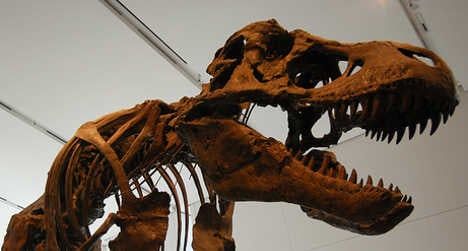The footprints are between 125 and 113 million years old, and were discovered by a team from Italy's National Institute for Geophysics and Vulcanology (Ingv).
Researchers used techniques inspired by 1993 film Jurassic Park to analyse the prints, and believe they could be helpful in shedding new light on the habits and behaviour of the dinosaurs that once lived in Italy.
The beasts that left the tracks belonged to the theropod group; biped, mainly carnivore dinosaurs which included the Tyrannosaurus.
Some of the prints were left due to dinosaurs' feet sinking into the muddy ground, while one is thought to have been left by a crouching animal.
One footprint, measuring 135cm in length, is the largest which has ever been found in Italy.
The tracks are located at a height of over 1,900 metres on an almost vertical limestone surface on the side of Monte Cagno in the L'Aquila region.
The prints are only reachable during the summer and autumn months, when the mountain isn't covered in snow, Ingv said on Monday, and it takes a two-hour hike from the nearest town, Rocca di Cambio, to reach the site.
In fact, the prints were first spotted in 2006, but it was only last summer that experts from Rome's La Sapienza University were able to identify and analyse the tracks – using techniques inspired by the 1993 film Jurassic Park.
A research team used a camera drone and other tech equipment to reconstruct a 3D model of the prints and study them in closer detail.
The video below shows the research team and drones in action.
As well as shedding light on the dinosaurs themselves, the study of their tracks has also helped geologists to understand the historical geography of the Mediterranean area millions of years ago.
“Contrary to what was believed in the past, the tracks show repeated migration of dinosaurs from the Gondwana continent (which joined Africa, South America, Antarctica, India and Australia) to the carbonate platforms of the Mediterranean,” Paolo Citton from La Sapienza University explained.
“This movement was made possible by variations in sea level, processes on a global scale which took place over long time periods on our planet.”
For more archaeology stories, visit our archaeology section here.
READ ALSO: Dinosaur footprints discovered in Bari

Photo: shvmoz/Flickr



 Please whitelist us to continue reading.
Please whitelist us to continue reading.
Member comments